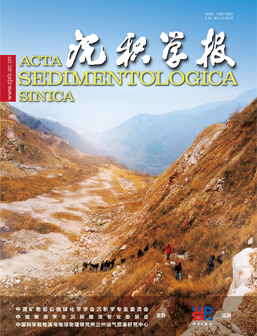The process of dolomitic in the Member I of the Maokou Formation, the southern Sichuan basin, and its indication for the formation of the eyelid-eyeball limestone-a case of DB1 well
doi: 10.14027/j.issn.1000-0550.2024.0045
- Received Date: 2023-12-18
- Available Online: 2024-04-22
-
Key words:
- the southern Sichuan basin /
- the Member I of the Maokou Formation /
- Limestone-marlstone with eyelid-eyeball structure /
- Sedimentary process /
- Dolomitic modes.
Abstract: [Objective]The limestone-marlstone alterations (LMAs) are the important archives of climatic, hydrological, and geological events for geologists. But as a typical endmember of the LMAs, the knowledge about the genesis of the LMAs with eyelid-eyeball structure of the Member I of the Maokou Formation in the Sichuan Basin has not come to agreement widely. This not only seriously affects environmental researching of the LMAs with eyelid-eyeball structure, but also affects the efficiency of its exploration. Dolomitization is developed in the LMAs with eyelid-eyeball structure (mainly in the eyelids) of the Member I of the Maokou Formation of the DB1 well during the penecontemporaneous and early diagenetic phase can be used to constrain the depositional environments of carbonate rocks. [Methods] In this paper, petrological and geochemical analyses have been carried out in detailed, the process and the fluid properties of dolomitization has been discussed to constrain the process of LMAs with eyelid-eyeball structure. [Results and Discussions]Three types of dolomitization are developed in the Member I of the Maokou Formation, which are muddy dolomitic (EDM-I); limy dolomitic (EDM-II) and dolomitic marlstone(EDL). EDM-I has the highest degree of dolomitization, distinct bands of cathodoluminescence, a flat rare earth partitioning pattern, higher δ13C and δ18O values but lower Y/Ho values relative to seawater, it was dolomitized by penecontemporaneous seawater mixed with a small amount of meteoric freshwater during the penecontemporaneous phase. EDM-II has the middle degree of dolomitization, a left leaning rare earth partitioning pattern and values of δ13C, δ18O, 87Sr/86Sr, and Y/Ho similar to seawater, it was dolomitized by seawater with high Mg/Ca, which was induced by frequent sea-level rise and fall changes during the syn-sedimentary and penecontemporaneous phase. EDL has the lowest degree of dolomitization, a left leaning rare earth partitioning pattern, higher δ13C and δ18O values relative to EDM-II, and seawater-like Y/Ho values. EDL was dolomitized by the sealed seawater of the syn-sedimentary phase which has been alterated with the wall rocks in the early diagenetic stage. [Conclusions] The dolomitization of the LMAs with eyelid-eyeball structure by weakly evaporating seawater and seawater mixed with freshwater during the penecontemporaneous and early diagenetic phase requires that the LMAs deposited in a shallower water. The high mud content, high strontium isotope and rare earth element values, low carbon and oxygen isotope values and Y/Ho values of the eyelid-like marlstone relative to the eyeball-like limestone indicate that the depth of water for the eyelid-like marlstone is shallower than that of the eyeball-like limestone during they deposited. Therefore, it is inferred that the LMAs in the Member I of the Maokou Formation were produced under cyclic oscillation in the depositional environment, and their genesis may have been mainly influenced by sedimentary process.
| Citation: | The process of dolomitic in the Member I of the Maokou Formation, the southern Sichuan basin, and its indication for the formation of the eyelid-eyeball limestone-a case of DB1 well[J]. Acta Sedimentologica Sinica. doi: 10.14027/j.issn.1000-0550.2024.0045 |






 DownLoad:
DownLoad: